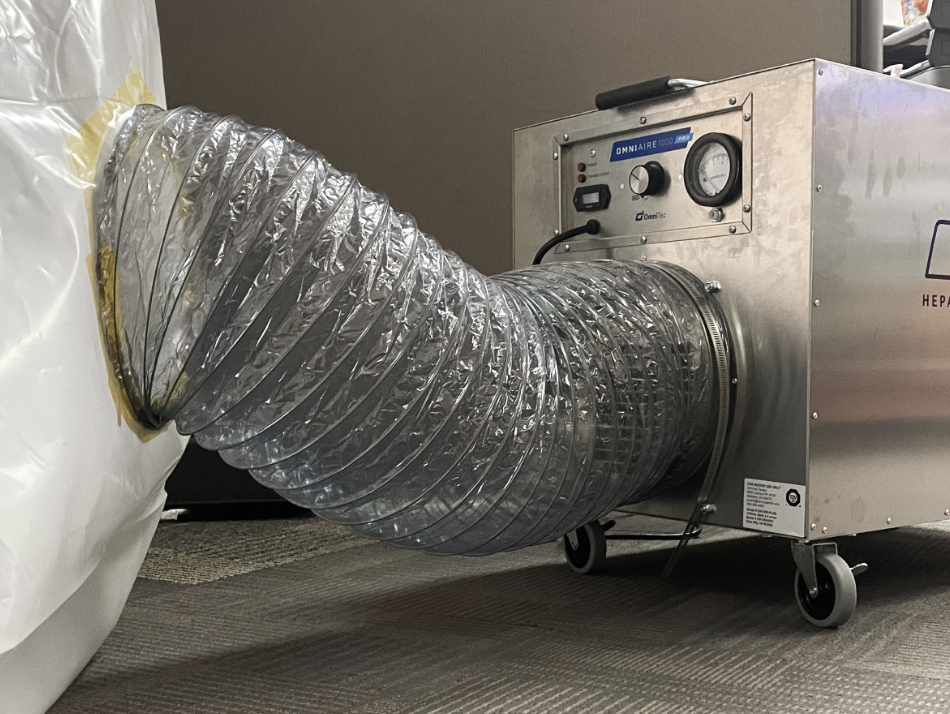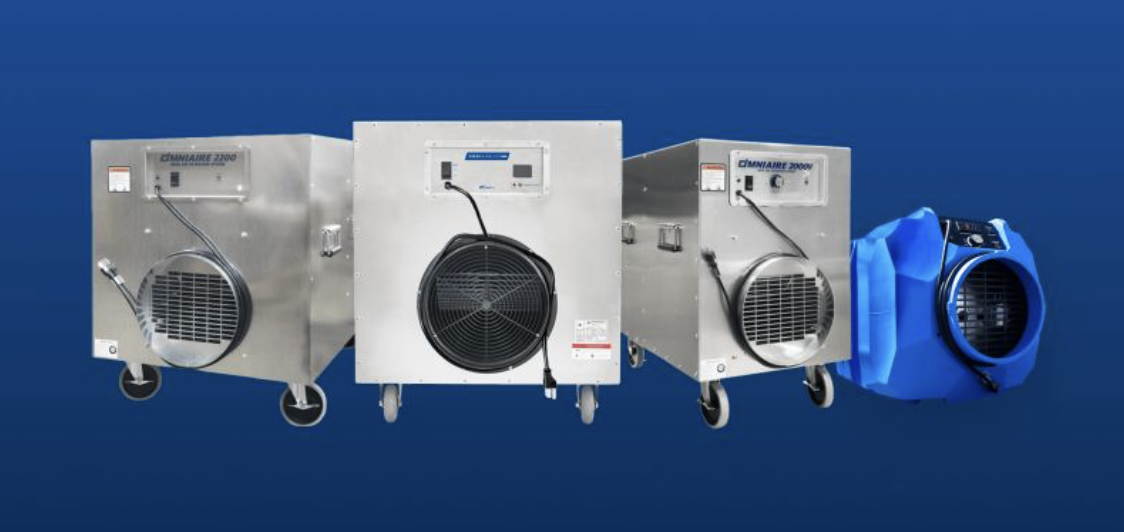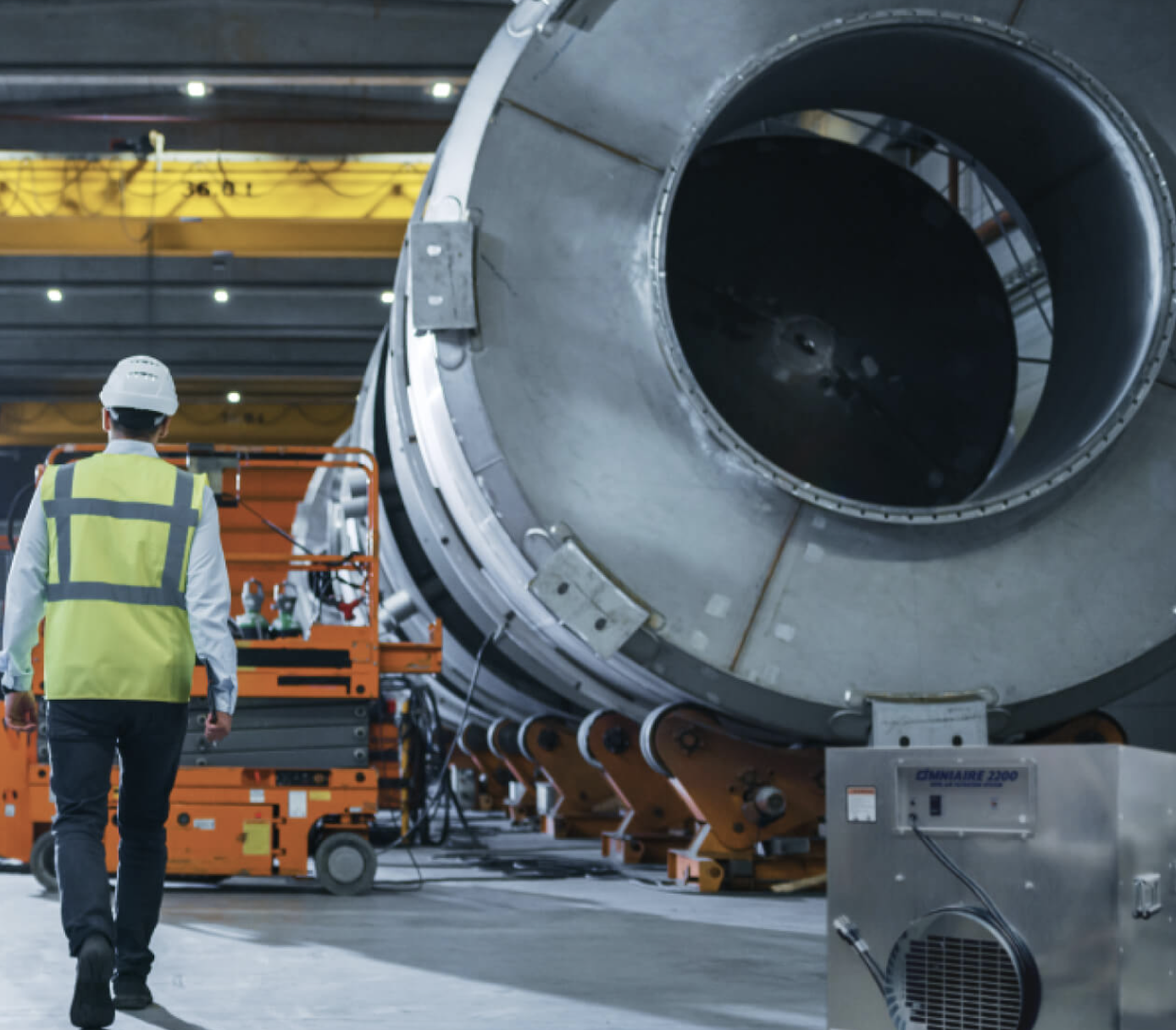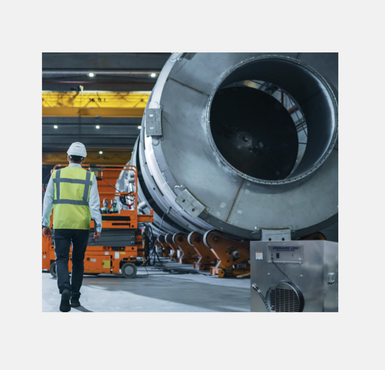Posted by Spycor LLC on Jul 29th 2025

Asbestos removal is a high-stakes process that demands precision, safety, and adherence to strict regulations. A critical tool in this process is the negative air machine, which plays a pivotal role in creating a safe environment by controlling airborne contaminants. In this article, we’ll explore how negative air machines work for asbestos abatement, their importance in maintaining negative pressure, and why HEPA filtration is non-negotiable for asbestos removal projects.

What is a Negative Air Machine?
A negative air machine is a specialized piece of equipment designed to create negative pressure within an enclosed work area, ensuring that hazardous particles like asbestos fibers are contained and filtered out. These machines are equipped with HEPA filtration systems, which capture 99.97% of particles as small as 0.3 microns, making them ideal for hazardous material removal such as asbestos abatement. By drawing contaminated air through a HEPA filter and exhausting it safely, negative air machines prevent the spread of asbestos fibers to other areas, protecting workers and the environment.
Why Negative Air Machines Are Essential for Asbestos Removal
Asbestos is a known carcinogen, and improper handling during asbestos removal can lead to severe health risks, including lung cancer and mesothelioma. The Control of Asbestos Regulations 2012 (CAR 2012) in the UK and OSHA compliance standards in the US mandate strict containment protocols. Negative pressure systems are a cornerstone of these regulations, ensuring that any asbestos fibers released during removal are contained within a sealed enclosure. Here’s why negative air machines are indispensable:
-
Containment of Asbestos Fibers: By maintaining negative air pressure, these machines ensure that air leaks inward rather than outward, preventing asbestos from escaping the enclosure. This is critical for safe asbestos removal in high-risk settings like hospitals, schools, and industrial facilities.
-
HEPA Filtration for Safety: The HEPA filtration system in negative air machines captures microscopic asbestos fibers, ensuring that only clean air is released. This is vital for protecting workers and complying with OSHA and CDC guidelines.
-
Versatile Applications: Beyond asbestos abatement, negative air machines are used for mold remediation, lead abatement, and other hazardous material removal tasks, making them a versatile tool for contractors.
-
Regulatory Compliance: Using negative air machines aligns with legal requirements, such as CAR 2012 Regulation 16, which mandates minimizing the spread of asbestos during removal. Proper air extraction and containment systems reduce the risk of fines and health hazards.
How Negative Air Machines Work in Asbestos Removal
The process of asbestos removal involves setting up a sealed enclosure around the work area, often using polyethylene sheeting and airlocks. A negative air machine, also known as a negative pressure unit (NPU), is strategically placed to manage airflow. Here’s how it works:
-
Creating Negative Pressure: The machine extracts air from the enclosure, creating a pressure differential (slightly below atmospheric pressure). This ensures that any leaks draw air into the enclosure, trapping asbestos fibers inside.
-
HEPA Filtration: As air is pulled through the machine, HEPA filters capture asbestos particles. Some machines, like the OmniAire OA2200UL, feature pre-filters to protect the HEPA filter from larger debris, extending its lifespan.
-
Air Extraction: The filtered air is either exhausted outside the building or recirculated after purification, depending on the setup. For example, asbestos removal equipment may duct air through an exterior wall to prevent recontamination.
-
Controlled Airflow: Airlocks allow clean air to enter the enclosure in a controlled manner, maintaining ventilation while ensuring negative pressure is sustained.
This process is critical for licensed asbestos removal, where strict protocols are followed to protect workers and prevent environmental contamination.
Choosing the Best Negative Air Machine for Asbestos Abatement
When selecting a negative air machine for asbestos removal, consider the following factors:
-
HEPA Filter Efficiency: Ensure the machine uses a HEPA filtration system rated at 99.97% or higher for 0.3-micron particles. Models like the OmniAire OA2000V are designed specifically for asbestos abatement.
-
Airflow Capacity: The machine should provide sufficient airflow (measured in cubic feet per minute, CFM) to maintain negative pressure in the enclosure size. For large projects, high-capacity units are essential.
-
Portability and Durability: Negative air machine rental is common for one-off projects, so choose a model that’s portable yet robust enough for continuous use, like those from Abatement Technologies.
-
Compliance with Standards: Verify that the machine meets OSHA compliance and other regulatory requirements for hazardous material removal.
-
Additional Features: Some machines offer advanced features like digital pressure monitors or multiple filtration stages, which enhance safety and efficiency.
Best Practices for Using Negative Air Machines in Asbestos Removal
To maximize safety and effectiveness, follow these best practices:
-
Proper Enclosure Setup: Use sealed containment systems with airlocks and polyethylene sheeting to isolate the work area. Ensure all seams and openings are taped to prevent leaks.
-
Pre-Testing: Conduct asbestos testing before removal to assess the risk level. This helps determine the appropriate negative air machine and containment setup.
-
Regular Maintenance: Check and replace HEPA filters as needed to maintain filtration efficiency. Clogged filters reduce airflow and compromise negative pressure.
-
Professional Operation: Asbestos abatement should only be performed by licensed professionals trained in using negative air pressure systems to avoid health risks.
-
Wastewater Management: For wet asbestos removal, use systems like the OMNITEC OmniFlow to filter asbestos from wastewater, preventing environmental contamination.
Negative air machines are a critical component of safe asbestos removal, ensuring that hazardous fibers are contained and filtered to protect workers, occupants, and the environment. By leveraging HEPA filtration and negative pressure systems, these machines enable compliance with strict regulations like OSHA and CAR 2012 while minimizing health risks. Whether you’re a contractor seeking negative air machine rental or investing in asbestos removal equipment, choosing a high-quality machine like those from Omnitec Design or Abatement Technologies is essential for successful asbestos abatement.
Ready to start your asbestos abatement project?
CLICK HERE to explore negative air machine rental options and top-rated equipment.

Frequently Asked Questions (FAQ) about Negative Air Machines for Asbestos Removal
What is the primary purpose of a negative air machine in asbestos removal?
The primary purpose is to create negative pressure within the asbestos work area.
Why is a HEPA filter absolutely essential for asbestos removal applications?
A true HEPA (High-Efficiency Particulate Air) filter is critical because it's certified to capture at least 99.97% of airborne particles that are 0.3 micrometers in diameter.
How do I determine the correct size (CFM) negative air machine for my asbestos project?
The correct CFM (Cubic Feet per Minute) rating depends on the volume of your containment area and the required number of air changes per hour (ACH) specified by regulatory bodies (e.g., OSHA, EPA) or industry best practices for asbestos abatement. Generally, a higher CFM is needed for larger spaces.
Can a standard household air purifier be used for asbestos removal instead of a negative air machine?
Absolutely not. Standard household air purifiers are not designed for the rigorous demands of asbestos abatement. They lack the powerful airflow to create negative pressure, the robust construction for hazardous environments, and often do not feature true HEPA filtration capable of effectively trapping and containing the high concentrations of asbestos fibers encountered during removal. Using anything less than a professional-grade negative air machine can lead to widespread contamination and serious health risks.
What other safety precautions and equipment are necessary when using a negative air machine for asbestos removal?
While a negative air machine is vital, it's part of a comprehensive safety protocol. You must also use appropriate Personal Protective Equipment (PPE), including:
- NIOSH-approved respirators (e.g., N100, P100)
- Disposable protective coveralls
- Gloves
- Eye protection
- Boot covers Additionally, strict containment barriers (e.g., poly sheeting with sealed seams), proper wetting agents for asbestos, and adherence to all regulatory guidelines for asbestos handling, transport, and disposal are essential. Never undertake asbestos removal without proper training and equipment.


